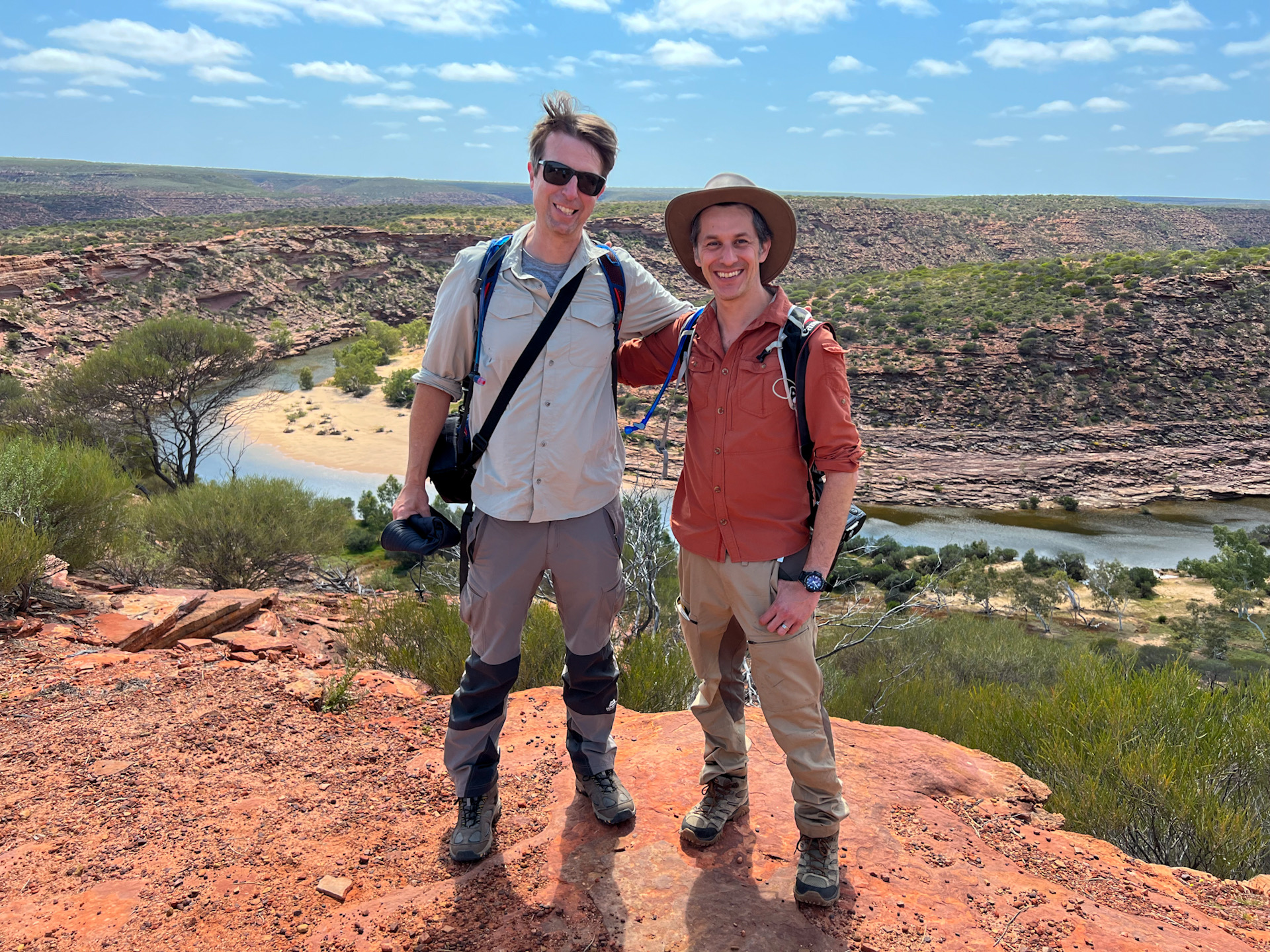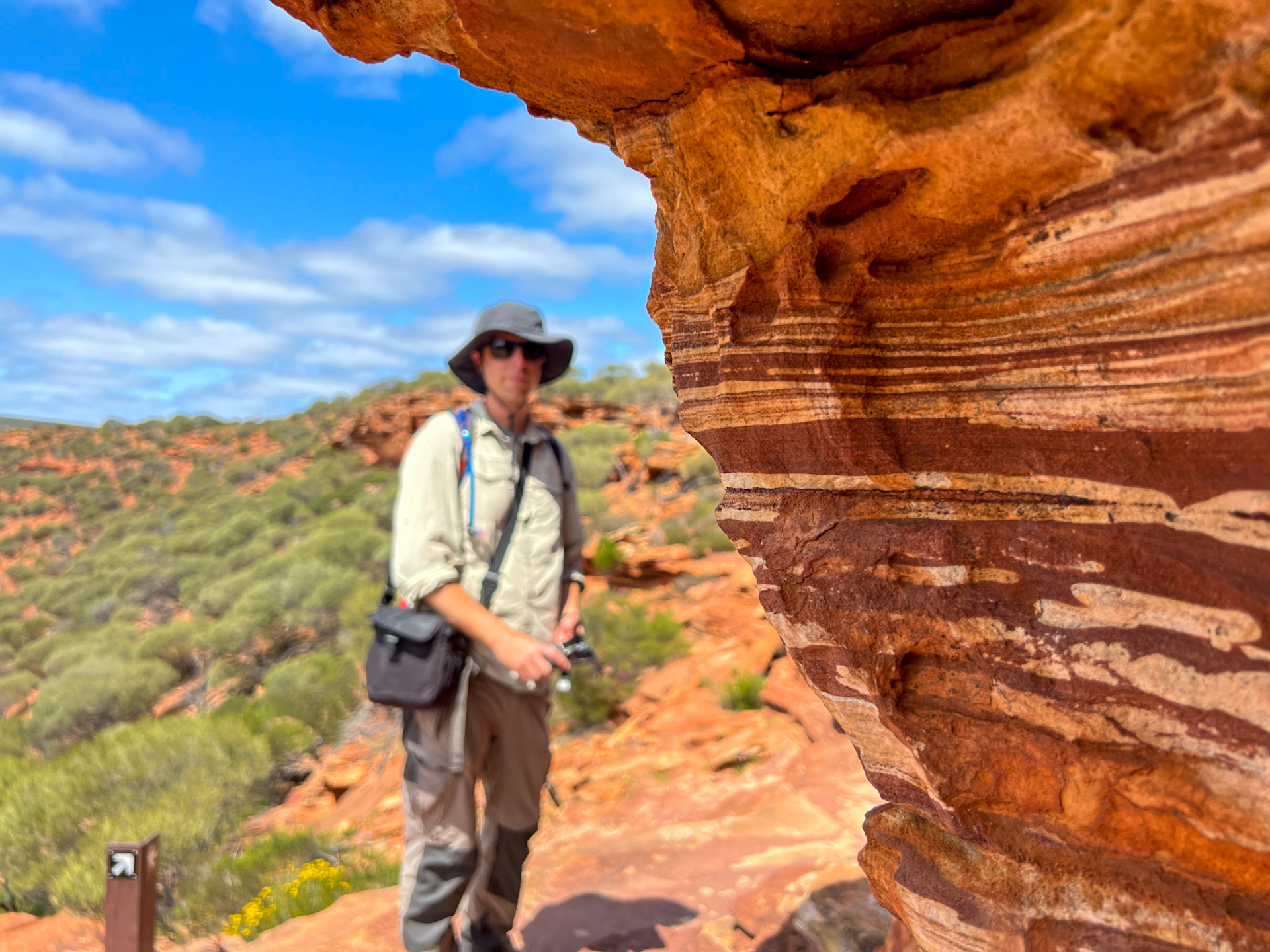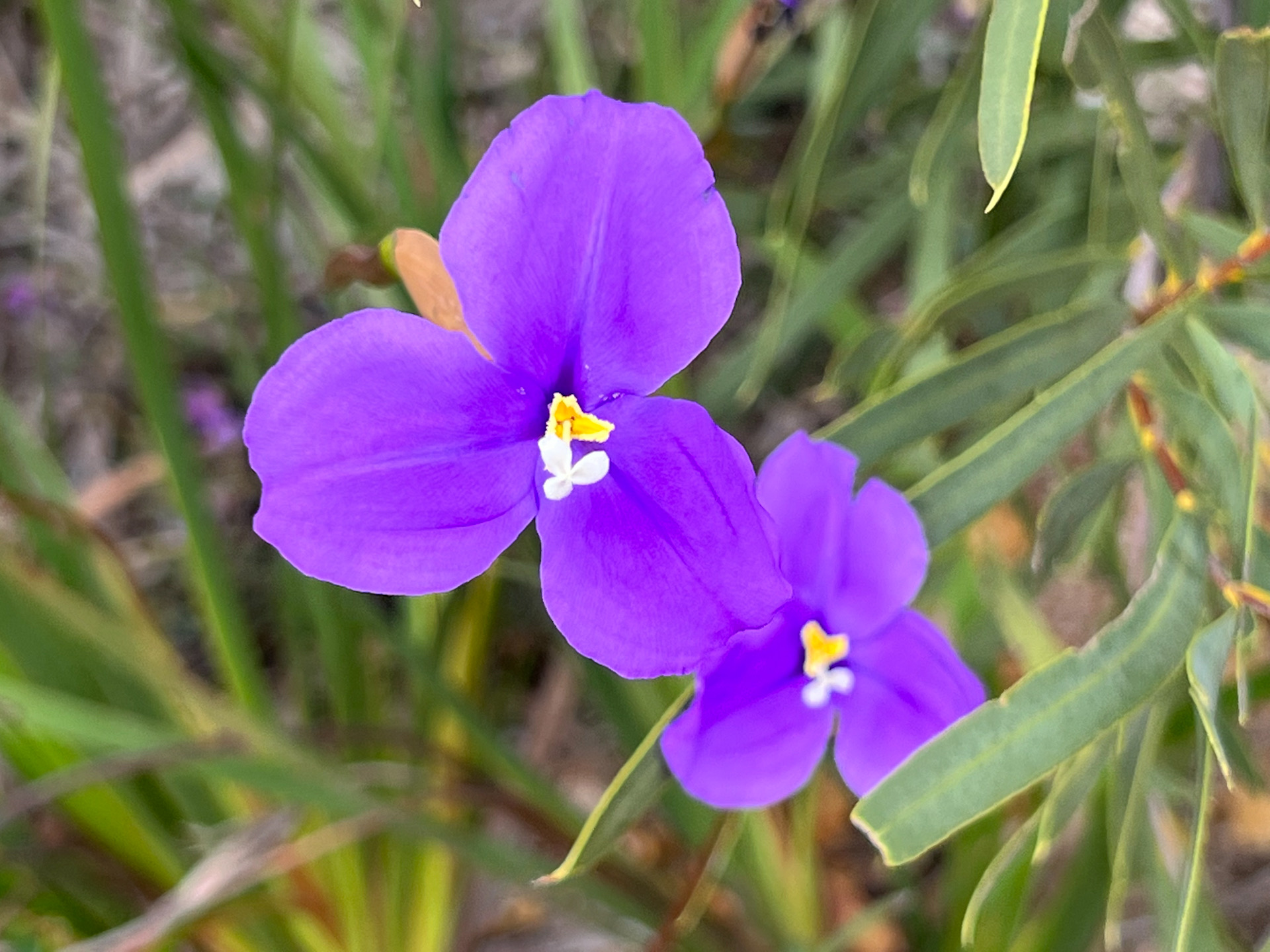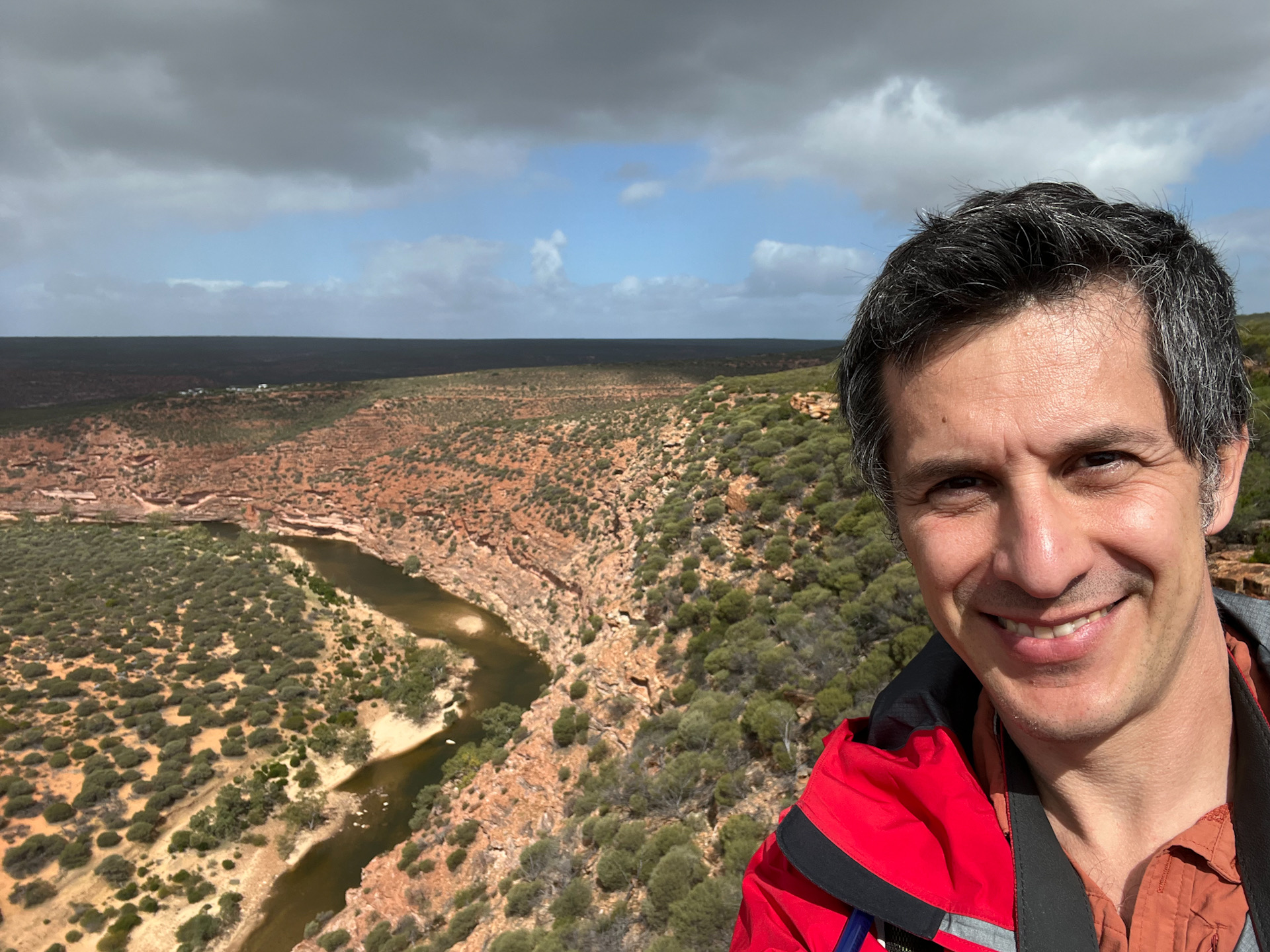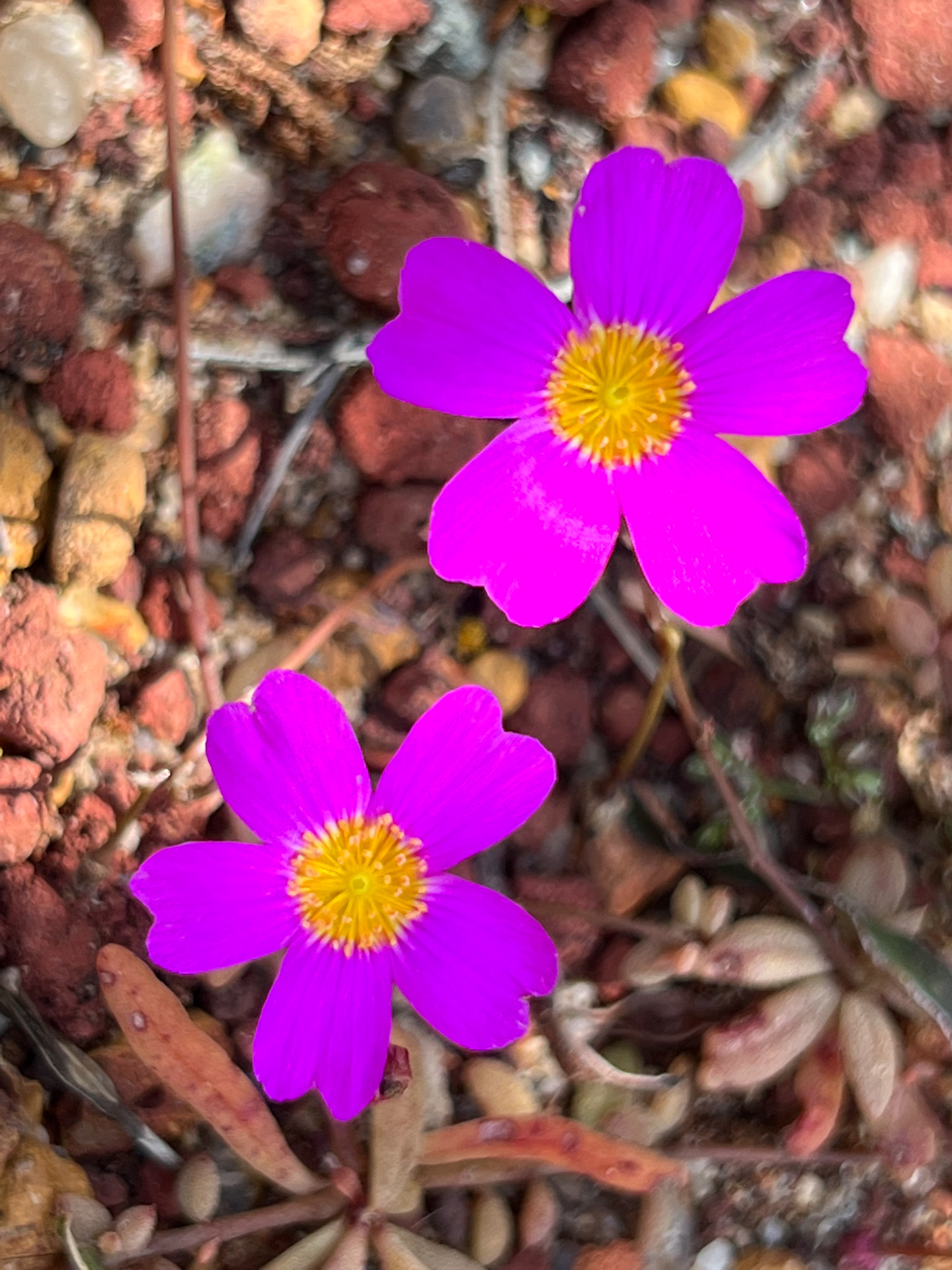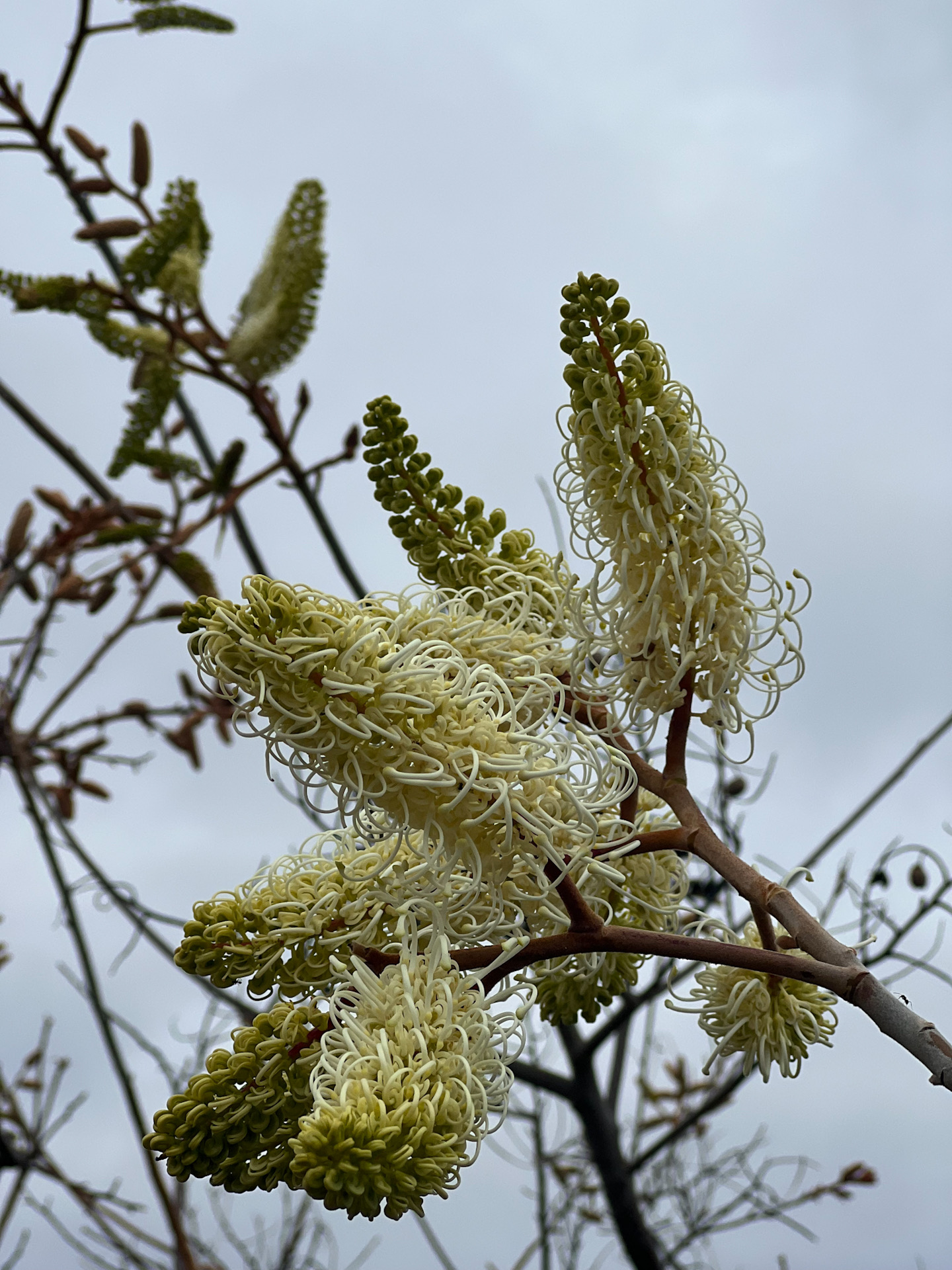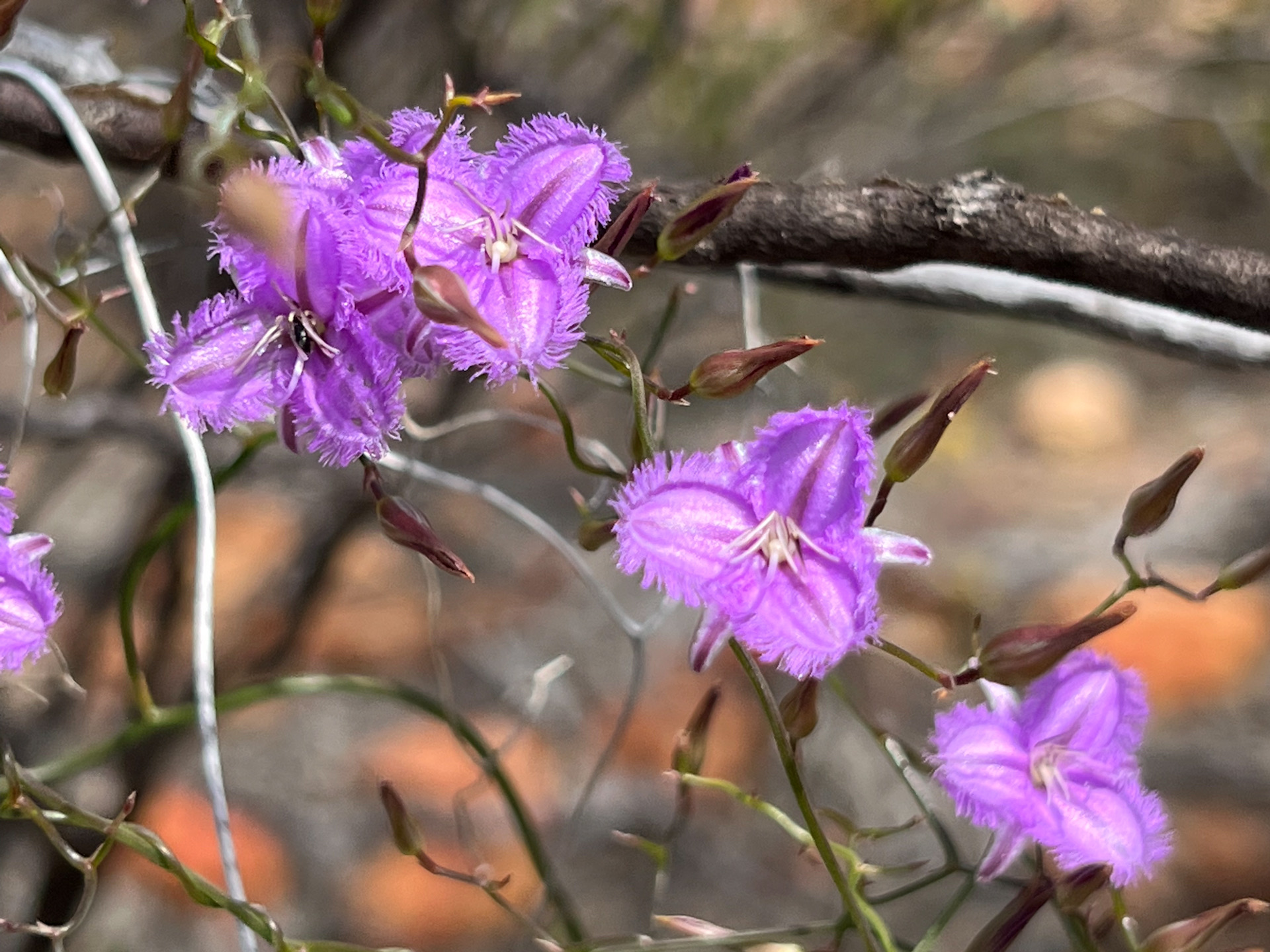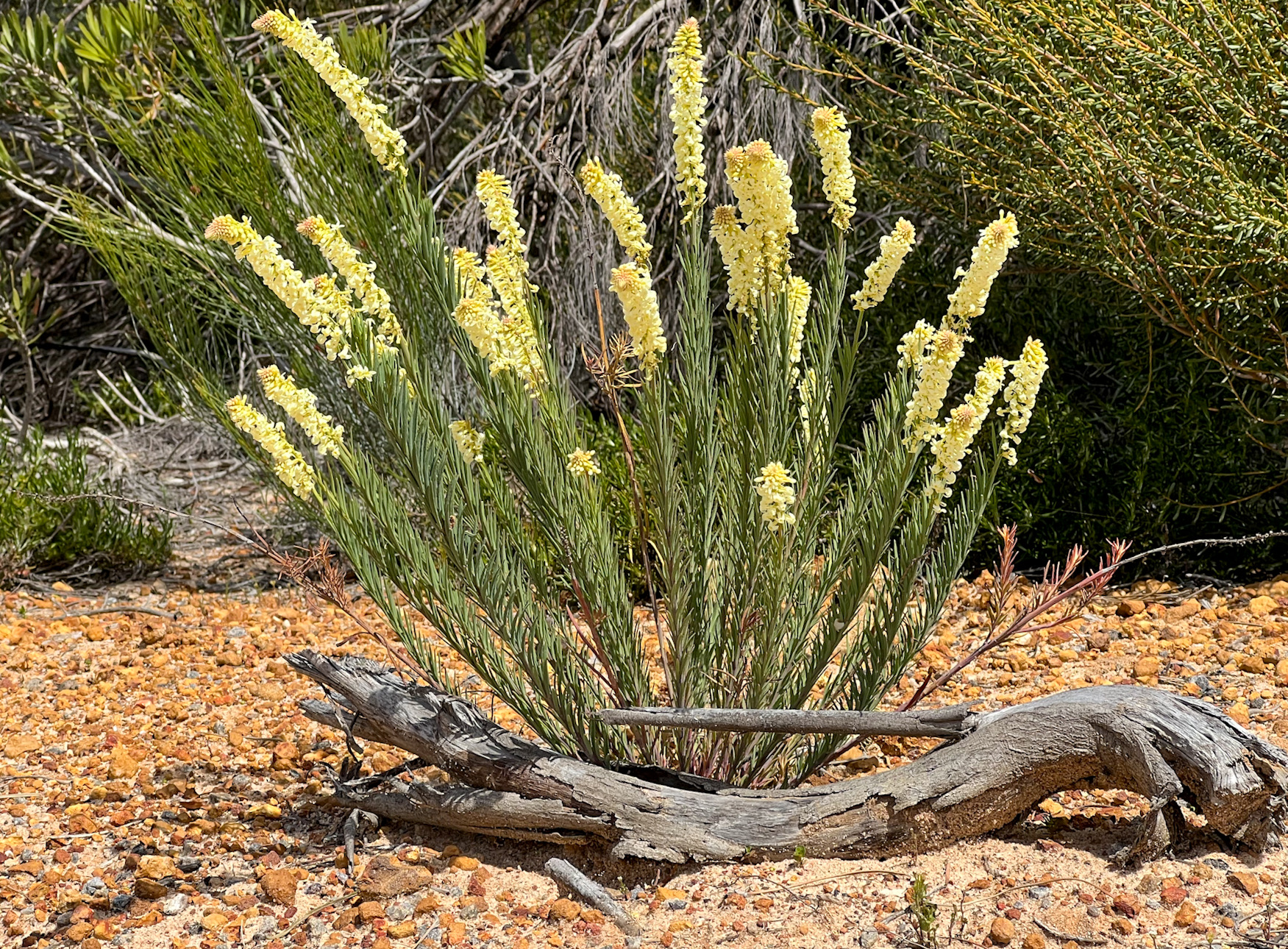20 September. Today we start driving South. First, we use ghe morning to return to Kalberri and visit the canyon again. The sky is bright blue, is less windy and the temperature around 20C, so we are hopefull to find bees. Along the walk we spot a small flowered Solanum, again with purple flowers. The combination of purple to lilac corollas and bright yellow anther cones seems to be widespread across buzz pollinated taxa here with the exceptions of all species in the families Fabacaeae and The Dilleniaceae (Hibbertia) that we have seen so far. we come to the rim of the canyon and its candy-coloured red and white banded sedimentary rocks.
Later we continue the drive back and spot many amzing plnts long the rod, including second Solanum with the same colour pattern.
We are targeting large patches of buzz pollinated bushes. The bees seem to be absent again today. A couple of honeybees visit them disinterestedly, gathering pollen in silence. these flowers offer no nectar, and it appears that a buzzing bee should be able to buzz large amounts of pollen from them. Yet honeybees, for reasons that remain unclear, are unable to buzz for pollen. The mute bees fly around looking for pollen grains. Why don’t they buzz? And where are all the native bees?
The frustration of driving hundreds of kilometres without being able to catch ny buzz pollinating bees is offset by the botanical treasure we see at every stop. Rare and fantastic flowers pop out from seemingly everywhere and every stop on the side of the road means finding 10-15 obviously new species for us. Banksias, Hakeas, Eucalyptus, Seringias, Cat’s paws, Kangaroo paws, daisies of all shapes, pea-flowered Fabaceae, yellow wattles…. the list goes on and on. Is this the most botanically diverse road trip in the World? How can all these species coexist in this mosaic of soil types? Floral displays carpet the vegetation and extend as far as you can see, with only agricultural fields bringing them to an end. We are in an amazing place at an amazing time of the year where plants of all kinds are pouring all their resources into producing millions of flowers. Bees and birds should be all over these plants, yet they re turning hard to spot. Is there a puzzle to solve with these missing pollinators or are we just unlucky?
The dearth of bees and the contrasting diversity of floral resources gives David and I plenty of material to speculate and develop projects and ideas. We might be leaving Western Australia with fewer bees than we anticipated, but we have ideas and inspiration to fuel us for a while. I have the feeling that I will be back in Western Australia sometime soon to study some of this buzz pollination systems.
